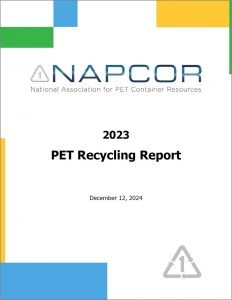PET, or polyethylene terephthalate, is a type of plastic commonly used in packaging, including many containers you might use for your pet’s food and supplies. Understanding What Is Pet Recycling and how it works is crucial for environmentally conscious pet owners. This article will explore the ins and outs of PET recycling, its benefits, and why it’s an important part of creating a sustainable future for our pets and the planet.
Understanding PET and Its Uses
PET is favored for its strength, transparency, and recyclability. You’ll find it in:
- Water and beverage bottles: Many pet water bottles and some liquid supplements come in PET bottles.
- Food containers: Certain types of pet food packaging, especially rigid containers and trays, can be made from PET.
- Jars and clamshell packaging: Treat containers and some packaging for pet accessories might utilize PET.
The widespread use of PET makes its recycling particularly impactful. Unlike some plastics that are difficult or costly to recycle, PET is highly recyclable and can be transformed into new products, reducing waste and conserving resources.
The PET Recycling Process: From Waste to Resource
So, what is pet recycling in practice? The PET recycling process is a series of steps that turn used PET products back into valuable materials. Here’s a simplified overview:
- Collection: Recycling begins with collecting used PET containers. This can be through curbside recycling programs, drop-off centers, and deposit refund schemes.
- Sorting: Collected materials are taken to recycling facilities where PET is sorted from other types of plastics and materials. Advanced technologies often assist in this process to ensure accuracy.
- Cleaning and Flaking: The sorted PET is then cleaned to remove contaminants like labels and residues. After cleaning, it’s typically shredded or ground into flakes.
- Processing: These PET flakes undergo further processing, which can include melting and pelletizing. This creates recycled PET (rPET) resin, a material ready to be used in manufacturing new products.
- Remanufacturing: rPET can be used to create a wide array of new items, including new PET bottles and containers, as well as fibers for carpets, clothing, and even strapping for packaging.
 A close-up view of clear plastic PET flakes, highlighting the processed material ready for remanufacturing.
A close-up view of clear plastic PET flakes, highlighting the processed material ready for remanufacturing.
Benefits of PET Recycling for Pets and the Planet
Understanding what is pet recycling also means recognizing its numerous advantages:
- Environmental Conservation: Recycling PET reduces the need to produce new plastic from fossil fuels. This lessens our reliance on finite resources and decreases greenhouse gas emissions associated with plastic production.
- Waste Reduction: PET recycling diverts plastic from landfills, where it can take hundreds of years to decompose. This helps to conserve landfill space and reduces the risk of plastic pollution in our environment.
- Energy Savings: Producing new products from recycled PET requires significantly less energy compared to using virgin materials.
- Circular Economy: PET recycling supports a circular economy, where materials are kept in use for as long as possible. This model minimizes waste and maximizes resource utilization, crucial for sustainable practices in the pet industry and beyond.
NAPCOR: Leading the Way in PET Recycling
Organizations like the National Association for PET Container Resources (NAPCOR) play a vital role in promoting and studying PET recycling. NAPCOR’s reports, like the “2023 PET Recycling Report,” provide valuable data and insights into the PET recycling industry, helping to improve recycling rates and infrastructure. These reports are essential resources for understanding the trends and progress in PET recycling across North America.
Conclusion: Making PET Recycling a Priority
What is pet recycling? It’s a vital process that transforms used plastic into a valuable resource, offering significant environmental benefits. As pet owners, understanding and participating in PET recycling is a simple yet powerful way to contribute to a more sustainable future. By choosing products in recyclable PET packaging and ensuring these items are properly recycled, we can all play a part in reducing plastic waste and protecting our planet for pets and future generations.
